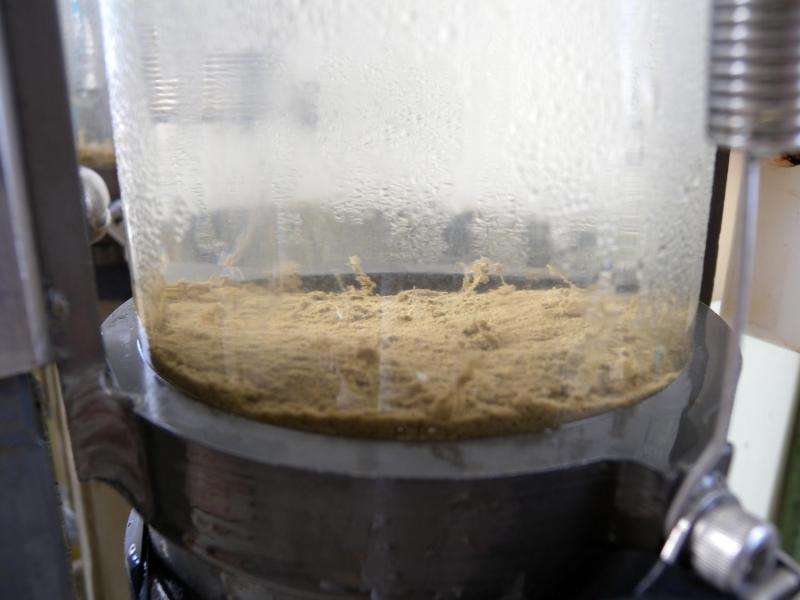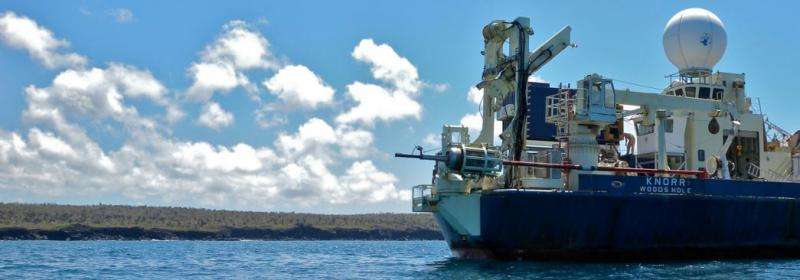December 4, 2015 report
New data helps show El Nino occurrences during the Medieval Climate Anomaly and Little Ice Age

(Phys.org)—A team of researchers with affiliations to several universities in the U.S. has helped uncover the frequency of El Niño events during the Medieval Climate Anomaly and the Little Ice Age by obtaining Eastern Pacific Ocean sediment samples. As they note in their paper published in the journal Science, the new data helps to better understand El Niño events in general and may help to predict their occurrences and impact in the future.
Understanding how El Niño events come about would go a long way towards predicting when they might occur, helping people living in countries that are impacted by such events better prepare—those in places such as Indonesia typically experience hotter and dryer temperature conditions (leading to widespread fires), while those places like North and South America experience the opposite (leading to storms and flooding). To that end, the researchers with this new effort sought to fill in a gap in the historical record regarding such events—the time during and just before the Little Ice Age. Such information has been scarce due to the difficulty in obtaining seafloor sediment samples in the Eastern Pacific Ocean. In this new effort, the researchers report on their successful efforts to gather such examples off the shores of the Galapagos Islands, what the samples revealed, and how they helped reveal the history of El Niño events during a time period from approximately five hundred to fifteen hundred years ago.
The team reports that the sediment samples showed that the eastern part of the Pacific Ocean warmed during the period 900 to 1150 CE (the Medieval Climate Anomaly), but then cooled from 1150 to 1500 CE (during the Little Ice Age)—that would have led to increased volatility, more El Niño events and a change to the surface temperature gradient, because of cooling occurring more rapidly in the east. After that, things quieted, but, the team notes, the changes in surface temperatures would have caused the Pacific Intertropical Convergence Zones to shift at the point where the trade winds run into each other.

The more historical data scientists can collect regarding surface temperatures the better they will be able to plot El Niño events over time, making it easier to predict them in the future.
More information: G. T. Rustic et al. Dynamical excitation of the tropical Pacific Ocean and ENSO variability by Little Ice Age cooling, Science (2015). DOI: 10.1126/science.aac9937
ABSTRACT
Tropical Pacific Ocean dynamics during the Medieval Climate Anomaly (MCA) and Little Ice Age (LIA) are poorly characterized due to lack of evidence from the eastern equatorial Pacific. We reconstructed sea surface temperature, El Niño–Southern Oscillation (ENSO) activity, and the tropical Pacific zonal gradient for the past millennium from Galápagos ocean sediments. We document a "Mid-Millennium Shift" (MMS) in ocean-atmosphere circulation ~1500-1650 CE, from a state with strong zonal gradient and dampened ENSO to one with weak gradient and amplified ENSO. The MMS coincided with deepest LIA cooling and was likely caused by southward shift of the Intertropical Convergence Zone. Peak MCA (900-1150 CE) was a warm period in the eastern Pacific, contradicting the paradigm of a persistent La Niña pattern.
Journal information: Science
© 2015 Phys.org
















